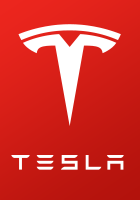omgwtfbyobbq
Active Member
To be honest, all I really want is a mass-market CV joint, so I can grab a set of outers from a j-yard and swap 'em with the existing ones for towing.
You can install our site as a web app on your iOS device by utilizing the Add to Home Screen feature in Safari. Please see this thread for more details on this.
Note: This feature may not be available in some browsers.
But if that is all you have, you still need:
safety chains,
a hitch,
a standalone brake controller (sits on the drivers side floor and physically pushes on the brake pedal when it senses deceleration),
a setup with lights to mimic the brake lights and turn signals of the RV (usually sits on rear trunk),
a baseplate (piece bolted to the Tesla that the hitch attaches to, which I think would be non-trivial for the Tesla because the attach points are usually in the grill),
and the way to run the coolant pump.
The "baby elephant" mode would only need the safety chains (legal reasons).
Even if it is not practical to charge the Tesla from the RV while driving, the Tesla would still get maximum range, as it would not be doing any fast starts or high speed driving. You might have to still charge it at a Supercharger every few hours, but that would be the same as any long trip.
This really would be a good market for Tesla - it is getting harder and harder for RV owners to get cars to flat tow. A favorite used to be the Honda CRV, but that can no longer be used because they went to a constant velocity transmission.
Well, with an AC Induction motor, with no permanent magnets, you're not going to generate any power spinning the motor. Unless Tesla enables regen mode...
AC induction motors don't have permanent magnets and to generate electricity you need a coil of metal rotating in a magnetic field.I'm not super sharp on induction motors, mind giving a quick explanation on this?
Agreed. There are a lot of possibilities with a towed BEV to turn the combined vehicles into a through-the-ground hybrid. With a braking signal from the RV tow vehicle, as provided from it's brake controller or even just brake light circuit, the BEV could assist with braking by recuperating energy every time the driver brakes. The BEV could be turned on and provide a minor propulsion force dependent on grade. When going down a hill it would coast. On level ground it might add say 5 kW. Going uphill it could increase to maybe 30 kW to help the RV slightly.A lot of complication for a few owners for such a small company; but I'm sure that someone will do it 20 years from now when they're searching for features to add to their electric cars to differentiate them.
but the BEV would need to know the destination to ensure the battery was full for that mode.
I don't understand why this would take 20 years to implement. All of this is already done onboard the Model S/X. The Tesla app would "just" need to be updated to interface with the car's navigation system. I don't think there are any significant technical roadblocks; however, the user market is pretty limited so I don't see Tesla devoting the resources to creating this functionality anytime in the next few years.That's exactly the kind of detail that someone will add in 20 years - integration of the navigation system (where am I going?), terrain database (what kind of hills am I going to run into today), BEV state of charge (Do I want to get there with the car fully charged, or am I arriving home at 10 PM and it'd be better to use the charge to improve RV mileage, and charge the car with cheap electricity in the garage), etc. A lot of juicy details to dig into and implement, but it's really too early to consider that now.
If it had to be a trailer [...] the car can "park" itself in the trailer you do not need room for a person to enter/exit the car.


